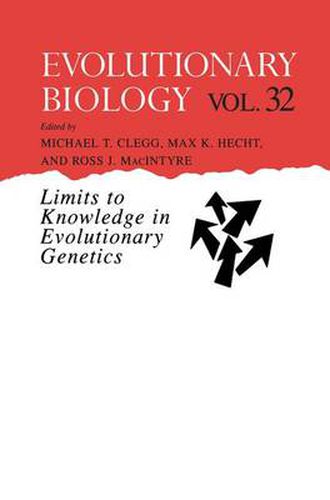Readings Newsletter
Become a Readings Member to make your shopping experience even easier.
Sign in or sign up for free!
You’re not far away from qualifying for FREE standard shipping within Australia
You’ve qualified for FREE standard shipping within Australia
The cart is loading…






This title is printed to order. This book may have been self-published. If so, we cannot guarantee the quality of the content. In the main most books will have gone through the editing process however some may not. We therefore suggest that you be aware of this before ordering this book. If in doubt check either the author or publisher’s details as we are unable to accept any returns unless they are faulty. Please contact us if you have any questions.
The nature of science is to work on the boundaries between the known and the unknown. These boundaries shift as new methods are developed and as new concepts are elaborated (e.g., the theory of the gene, or more recently, the coalescence framework in population genetics). These tools allow us to address questions that were previously outside the realm of science, and, as a consequence, the boundary between the knowable and unknowable has shifted. A study of limits should reveal and clarify the boundaries and make sharper the set of questions. This book examines and analyzes these new limits as they are applied to evolutionary biology and population genetics. It does this by framing the analysis within four major classes of problems: establishing the fact of evolution; understanding the evolutionary pathways that led to today’s biological world; mechanisms of evolutionary change (e.g., models of social behavior, sexual selection, macro evolution); and, finally, prediction.
$9.00 standard shipping within Australia
FREE standard shipping within Australia for orders over $100.00
Express & International shipping calculated at checkout
This title is printed to order. This book may have been self-published. If so, we cannot guarantee the quality of the content. In the main most books will have gone through the editing process however some may not. We therefore suggest that you be aware of this before ordering this book. If in doubt check either the author or publisher’s details as we are unable to accept any returns unless they are faulty. Please contact us if you have any questions.
The nature of science is to work on the boundaries between the known and the unknown. These boundaries shift as new methods are developed and as new concepts are elaborated (e.g., the theory of the gene, or more recently, the coalescence framework in population genetics). These tools allow us to address questions that were previously outside the realm of science, and, as a consequence, the boundary between the knowable and unknowable has shifted. A study of limits should reveal and clarify the boundaries and make sharper the set of questions. This book examines and analyzes these new limits as they are applied to evolutionary biology and population genetics. It does this by framing the analysis within four major classes of problems: establishing the fact of evolution; understanding the evolutionary pathways that led to today’s biological world; mechanisms of evolutionary change (e.g., models of social behavior, sexual selection, macro evolution); and, finally, prediction.